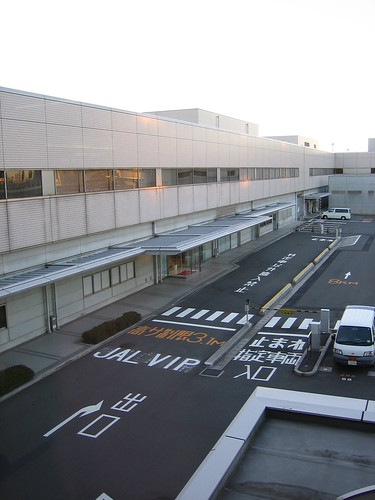Horse racing in Japan (Keiba) is a government-sponsored gambling powerhouse. Other lucrative state-owned gambling venues in Japan include Keirin (bike racing, “Welcome to sports cycle race “KEIRIN” in the world to which Japan gave birth.” < - THANK YOU, machine translation!) and Kyotei (boat racing, the brainchild of war criminal and would-be Nobel laureate Ryoichi Sasakawa).

When I was going to high school in Japan, I often spent Saturdays with my host father as he played the horses. He’d read the horse racing newspaper, call in his choice to a bookie on his cell phone, instantly fall asleep, and then wake up just as the race came on TV only to lose every time. He never seemed to mind though — every time he lost he’d just make a kind of Japanese sighing noise and look at the paper again for the next race.
He was a hard drinking, hard smoking gambler who wheeled and dealed in local politics – all attributes that I would normally consider sleazy if he were not also one of the most warm and kindly people that I’ve ever met.
Anyway, back to the point of this post: the Internet seems to be changing this (apparently illegal) bookie system. ZAKZAK reports (and I paraphrase):
Bookies Disappearing as Online Horse Bets Gain in Popularity
Raison d’etre Lost Upon Institution of High-Payout 1st-2nd-3rd BetsThe Japan Racing Authority (which runs Japan’s horse races for the national govt) will hold the first GI race of the year, “Febuary S,” at the Tokyo Race Track. As the races are run, [yakuza-connected] “bookies,” who are officially banned by the Horse Racing Law [but nevertheless prevalent] are quickly shrinking in number. In addition to an aggressive clampdown by police, the benefits of making bets through a bookie are disappearing due to the popularity of purchasing racing tickets on the Internet (on mobile phones etc) as well as the institution of “1st-2nd-3rd” bets with high payouts.
According to a report (PDF) by the National Police Agency, incidents for bookie activities, after peaking in 1992, have decreased 90% since then.
The benefits of bookies were: (1) Most tickets can be bought at low prices starting at 90 yen since management expenses etc are not deducted from sales; and (2) On top of being able to gamble away from the official ticket counters by placing bets on the phone, one can pay after the fact, making it possible to bet without having any money on you at the time.
However, as the authorities strengthened their enforcement of the law, the JRA expanded its services to allow customers to buy tickets on the internet or mobile phones. By 2005, Internet purchases had come to make up 43% of sales. In 2004, the “1st-2nd-3rd” bets were instituted, removing bookies’ raison d’etre.
A senior detective of the Hyogo Prefectural police, who must deal with the [infamous yakuza family] Yamaguchi-gumi in its jurisdiction, comments, “Many bookies made maximum odds of 100:1. Recently 1st-2nd and 1st-2nd-3rd bets have been instituted, and even 100,000 yen tickets. The recognition spread that even buying from the illegal bookies, it was a ‘high-risk, low return’ bet.”
As demand disappears, bookies have started to go out of business. The senior detective notes, “In Hyogo Prefecture, a certain group directly connected to Yamaguchi-gumi that had provided the source of funds for bookie activity has seen its debt skyrocketing currently due to a lack of revenue, placing it in a state of destruction. I guess there’s no longer a role for bookies.”
ZAKZAK 2006/02/15
The comfortable and semi-legal relationship between the government and organized crime in Japan never ceases to amaze me. Well, it’s not just that it’s so comfortable, but also that it’s so open and obvious, and not just in the realm of horse racing (see links).
I mean, the JRA could easily have offered (pre-paid) telephone bets and high-odds betting options long ago, which would have eliminated the need for yakuza bookies.





